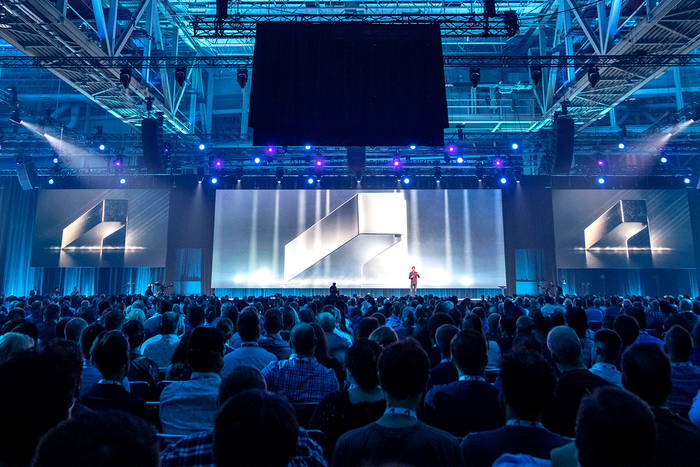Getting Accustomed to the AI Freak Out
Most conversations at Autodesk University were about AI. Yet after a year of AI shock, we’re getting used to being terrified.
November 16, 2023

At a Glance
- AI for design and manufacturing
- The future of AI
- The AI winners and losers
As we approach the year mark since ChatGPT debuted, Autodesk University was a three-day talkathon on everything AI. And appropriately so. Artificial intelligence is changing the world of design, manufacturing, and AEC (architecture, engineering, and construction), the core of Autodesk’s world.
I was first introduced to the power of AI several years ago by Autodesk during a phone briefing. A company representative described (and demonstrated on a shared screen) how generative design worked. The implications were stunning. A software program had the power to create parts that were lighter and stronger than parts designed by humans. That was the holy grail for automotive and aerospace where lightweighting matters.
Fast forward to the release of ChatGPT in December 2022. That program put AI on the desktop of every professional in every industry. Yet, over the past year, ChatGPT has proven to be clunky compared to the AI advances demonstrated at conferences such as 3DExperience World by SOLIDWORKS, Realize by Siemens Digital Industry Software, and now Autodesk University.

Autodesk
AI now lives like a membrane in the software and helps connect previously discrete programs. And it’s relieving technology companies of tons of engineering drudgery. With it comes opportunities. In response, Autodesk has effectively renamed itself AutodeskAI.
Earlier this year, everyone was freaked out about AI. Asked whether AI scared him, Siemens Digital Industry Software CEO Tony Hemmelgarn, admitted, “Yes.” Asked what it was about AI that scared him, he said, “I don’t know.” Then, of course, he went on to talk about all of the opportunities. That was June 2023.
Flash forward to November 2023 and the mood has changed. People are still freaked out, but they’re getting used to being freaked out. The number one concern on everyone’s mind is: will AI replace me? That includes this journalist. In February at IME West, I interviewed Brian Evergreen, the Global Head of Autonomous AI Co-Innovation at Microsoft Research. If anyone knew whether AI might replace journalists, he was the guy. His response was quick: “AI doesn’t do news. It can only churn up what has already been written.”
The question of what jobs will disappear is getting sorted out. Engineers who spend their days conducting a zillion configurations of a part will be relieved of that drudgery. At a reception at Autodesk University, I sat at a table with two engineers from Melbourne. When asked what they do, they said, “We’re draftsmen.”
“So, you’ll be losing your jobs,” I quipped.
They both nodded in agreement. Then they went on to explain they while they won’t be drafting anything, there is still plenty of work to be done.
That was the mantra at Autodesk University. Over and over, technology executives explained that computers will take over the drudge work, but nobody’s going to get cut loose. The worker shortage is not letting up. Everyone keeps working, though their work may morph into tending to the cloud master of AI.
AI is changing the world each day. We’re not sure yet who the winners and losers will be. During the Dot Com revolution, the winners were supposed to be America Online, CompuServe, and Yahoo. Google and Facebook hadn’t been born, and Amazon was an online bookstore. The big winners of AI are unknown right now.
Certainly, those providing cloud services and AI tools – Amazon, Google, Microsoft – will be part of it. Likewise, many of the software companies that consolidate and deploy AI into operating functionality – SOLIDWORKS, Siemens Digital Industry Software, and Autodesk – are likely to play an important role. Beyond that, we probably don’t yet know the names of the companies that will be AI giants in five years.
About the Author(s)
You May Also Like





